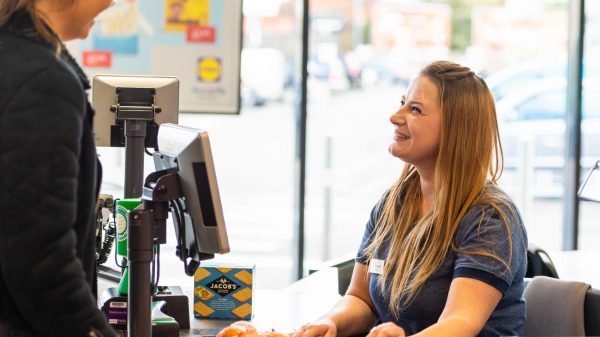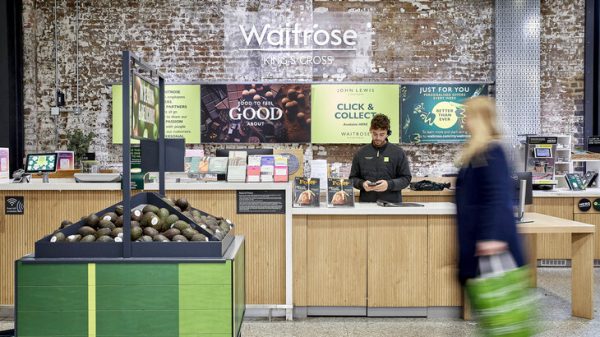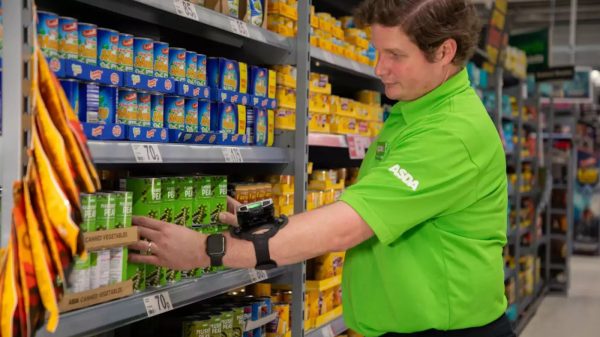A year ago, much of the world was living under draconian containment measures implemented by state and local authorities in the hope of mediating the impact of Covid-19. With schools and businesses closed, learning and working went virtual, transforming millions of homes into ad hoc offices and classrooms. And with health restrictions prompting consumers to increasingly embrace online shopping, e-commerce experienced an unprecedented surge in popularity, exceeding growth forecasts by several years.
Key facilitators of this success include adapted delivery solutions such as click & collect, which enables shoppers to pick up their orders in a safe and efficient way. They will typically buy online and pickup in-store (BOPIS) or at a third-party location such as a post office or pick-up locker. Tested and strengthened over the last year, click & collect has proven to be a flexible solution that offers numerous benefits to shoppers and retailers alike.
Meeting customers wherever they may be
One of the major trends shaping the global retail industry is the omni-channel transition. Driven by the rise of e-commerce and consumers’ evolving expectations, this trend compels retailers to embrace digitalisation to offer their customers a mix of digital and in-store shopping experiences. The growth of global e-commerce, coupled with the development of social media and other new forms of communication, has created a retail landscape in which customer centricity is no longer a point of distinction between competitors, but rather a necessity for any successful retail strategy. As the driving force behind the development of omni-channel shopping, consumers and their evolving expectations are defining the future of retail.
A win-win solution for customers and retailers
If customer-centricity is the new normal, retailers must first understand what customers expect from their shopping experience. Even without considering the amplifying effect of the pandemic, demand for self-service and contactless shopping options, increased inventory visibility and home delivery services have steadily grown. Increasingly, shoppers are becoming more comfortable with e-commerce, which has enjoyed nearly uninterrupted growth since its inception. They also expect their online shopping experiences to be smooth and convenient from start to finish.
This means retailers must offer more than just a streamlined, user-friendly interface. They also need to provide multiple payment methods, flexible delivery options, and easy returns. Indeed, the final step in the online shopping experience can be a decisive moment in the customer experience, which is why click & collect is so well suited to the modern marketplace.
Designed for convenience and flexibility, the click & collect approach gives consumers greater control over their delivery experience. Shoppers can choose where and when to pick up their orders with the added benefit of being able to return any unwanted items to the same location, even if that location is a post office. For retailers, click & collect can cost less than typical deliveries, as it allows for order consolidation, which simplifies logistics and considerably reduces the frequency of failed deliveries. By eliminating those, retailers can also eliminate the resulting processing costs.
The Covid-19 effect
While most of the trends affecting retail and e-commerce were underway prior to 2020, the global pandemic has amplified and accelerated them, especially the desire for self-service, the shift online and the meteoric increase in returns. Consumers under lockdown soon realised the inconvenience of delivery companies arriving in the middle of a Zoom meeting, as opposed to the ease of click & collect, which allowed consumers to retrieve their parcels at their convenience. For retailers struggling to meet surging demand during Covid-19, click & collect has provided both a means of reducing home delivery costs and an easier, more affordable option to scale up activity as needed without paying a third-party fulfilment agent or hiring and training new employees.
Certain challenges remain
To be sure, click & collect is not without their challenges. Chief among these is labour, namely picking. The average warehouse does not lend itself to the kind of small-scale item level picking that most click & collect orders require. Dark stores may provide a compelling solution where order capacity is sufficient, but this adds complexity to the supply chain. Many retailers have found it more efficient to pick from existing stores, primarily due to their proximity to customers – which means reduced last-mile delivery costs and environmental impact. Automation, particularly micro-fulfilment centres (MFCs) will have some impact here. But they involve significant capital expenditure and will only be viable options for some retailers.
Warehouse pickers lack the time to replenish empty stocks, while inventory management substitution comes with its own set of challenges, particularly customer dissatisfaction. Stock visibility and on-shelf availability remain key areas of concern. Automation can help here: mobile technology can empower staff, robotics can accelerate fulfilment, data analytics and technologies such as shelf edge cameras and pressure mats can improve inventory accuracy. Quick response (QR) codes can also be used to enhance traceability and reduce waste.
The click & collect of tomorrow
Propelled by Covid-19, e-commerce is expected to account for 22% of global chain retail sales by 2023, reinforcing the move toward smooth, seamless, omnichannel interaction. Considering the pandemic’s effect on consumer trends such as contactless options, personalised experiences, and the desire for flexible delivery solutions, click & collect has a promising future. Challenges remain, but if retailers can control costs and master inventory management, then click & collect can help increase sales. It can complement and strengthen customer loyalty by providing consumers with the high-quality shopping experiences they seek.
By Mark Thomson, director of retail industry solutions, EMEA, Zebra Technologies










